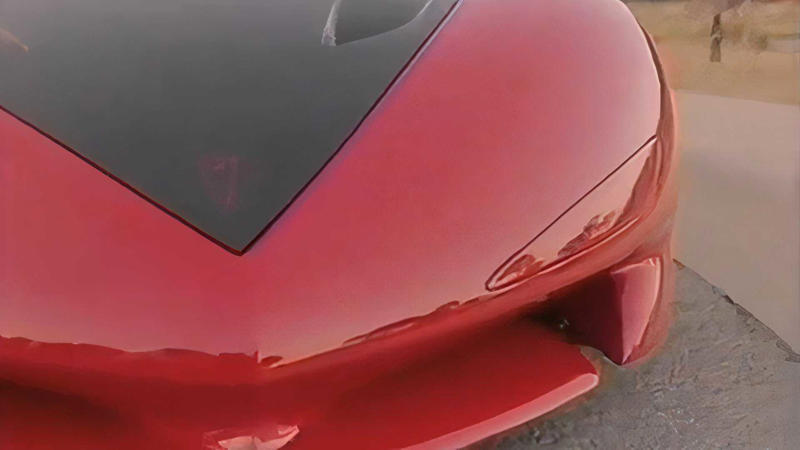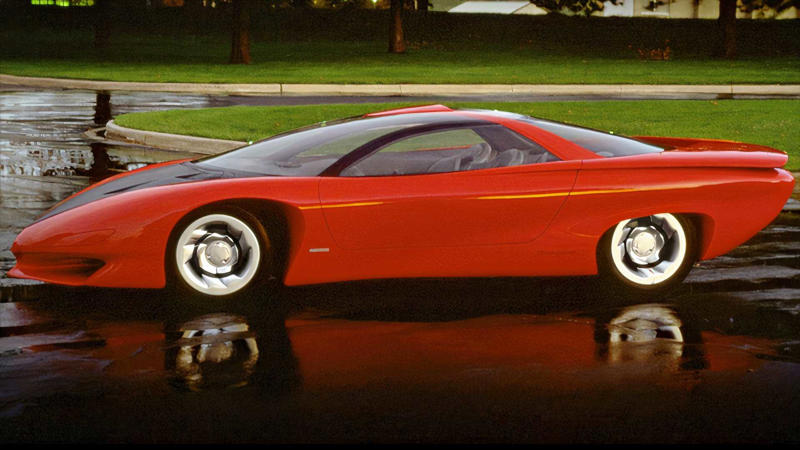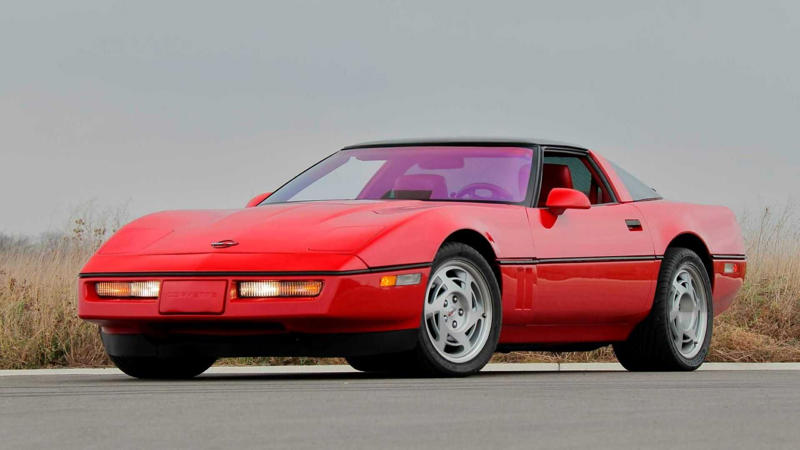This Forgotten Pontiac Concept Would Have Been The Corvette’s Biggest Rival
This is a Pontiac concept car that you won't find languishing in the classifieds, and it's called the Banshee. Built back when John DeLorean was still at General Motors and hadn't yet produced the iconic DMC DeLorean, this was about as futuristic as you could get when it came to four wheels.
Following in the footsteps of the first three members of the Banshee family tree, the red car above was ahead of its time and unlike anything else. Had it come to production it would have given the Chevy Corvette something to cry about. Sadly, it wasn't to be, but the spirit of this sports car prototype lived on in a very real way, inspiring the design of the fourth-generation Pontiac Firebird that you can still go out and buy. Right now. Below we look at the origin story of this special concept that helped pave the way for the final Firebird.

Audi AVUS II
The Forgotten Concept Cars That Could Have Changed The Market
Many concept cars never made it to the production line. Here are ten that have been forgotten, despite qualities that could have changed the market.
The Pontiac Banshee IV Concept And Its Origins

Pontiac Banshee concept, front 3/4
This concept car was one of various prototypes built by Pontiac and this, the Banshee IV was unveiled in 1988. It was a great exercise in PR for the brand, showcasing the engineering and design prowess of Pontiac's engineers, but the Banshee's goal was to preview future design ideas for its cars, specifically the Pontiac counterpart for the fourth-gen Camaro. Its name - Banshee - comes from the family of four core sports car projects that go back to the '60s. It wasn't green-lit (like the other Banshee models) but laid the way nicely for the Firebird in 1992.
The Banshee's Origin Story: The Highlights
XP-883 (Banshee I)
The first Banshee was retroactively named as such, although its working title was XP-883. Produced by the Pontiac team under the direction of infamous character John DeLorean, it was intended to be a fast, affordable two-door coupe for Pontiac that could bring the fight to the mighty Ford Mustang.
Following Pontiac's previous experimentation with its crazy turbine-powered Firebird concepts, the XP-883 car was born in 1964, bearing a striking resemblance to the C3 Chevy Corvette. In fact, it predated the Corvette and was inspired by the 1962 Corvair Monza GT Concept Corvette. Big power was on the agenda for benchmark-setting performance. A 3.8-liter V6 was chosen despite the potential for more powerful hardware to avoid upsetting GM bosses and a second car was fitted with a 5.3-liter V8. Still, GM execs didn't fancy the idea of a new Pontiac that would trample all over its Corvette. DeLorean was told to down tools on the project and go back to the Firebird. In an act of irony, GM used the design to inspire the new C3 'Vette. However, DeLorean was famously tenacious.
Banshee II / Banshee III
Another go at the Banshee happened in 1968 and this time it was a Firebird-based, fiberglass-skinned sports car (the orange example above). Powered by a 6.6-liter Pontiac engine, it had a low windshield that ended in a long rear deck with two buttresses running its length. Covered wheels, brake-cooling ducts, hood louvers, and extremely low-positioned taillights were part of this futuristic car's package.
There was another Banshee - the third in the series - that again pushed the design envelope for '74. The Banshee III looked more like a conventional model and was built on the Firebird platform. There were futuristic features on this car such as the curved wraparound rear window that would appear on the 1975 Firebird, as well as the pointed front end with covered headlamps that also previewed future design directions. Its rear taillamps were slit-shaped and later revised to a round hole design that also previewed cars from the future. Under the hood of the Banshee III was the solid and revered 455 Super Duty engine.
Banshee IV
The final iteration of a concept or prototype to use the Banshee name was number IV, the final red model at the end of the gallery above. It also previewed future design even more directly as well as much more outlandish and futuristic ideas that were not to be widely available for years yet.
Unlike the first prototypes headed up by DeLorean, the final Banshee did not feature a particularly impressive performance focus despite its sleek and aggressive silhouette.

Side view of 1976 Chevrolet Aerovette concept car
GM's Greatest What-Ifs: 10 Concept Cars That Never Made It
GM has crafted some radically cool concept cars that should have made it to production, but unfortunately fell short.
Outlandish Features: How The Banshee IV Distinguished Itself

Pontiac Banshee IV, closeup of front corner
The 1988 Banshee's exterior was crafted with an aggressive pointed nose and covered headlamps. A striking pointed hood takes pride of place at the front, painted black for contrast. Inset wheels are also wider at the rear and slightly covered by the bodywork draped over the chassis. The bodywork is conceived with a clear focus on aerodynamics - an eccentric choice is the lack of door handles or wing mirrors but the absence of these would have helped reduce drag or turbulence.
Pontiac's designers implemented a clear line running through the center of the car's body that runs into a long rear deck and the boat-like rear end. The split spoiler is another intriguing touch of genius, however, it's not clear if this car received any in-depth aerodynamic testing so it's likely they were more ornamental than functional.
The Interior From The Jetsons
At the curbside, the Banshee already impresses with its sensual and aggressive exterior design, but the interior is where things take an eccentric turn. As Pontiac described it, this 'space age' interior includes lots of futuristic ideas and some features that would preview tech available later on in mass-market production cars.
The dramatic seats are composed of two parts with a 'floating' top section that can swivel for access to the rear seats. These headrests have integrated speakers, another feature that would again preview an option for some modern vehicles.
Up front, the dash and wheel are covered in buttons and screens - back from when a plethora of buttons was a desirable attribute. This sea of gray plastic hides an advanced audio system with a compact disc player - a system that Pontiac humorously said would provide audiovisual ecstasy to passengers. The quantity of buttons on the steering wheel would put even automakers like Ferrari to shame today.
Highlights of the Banshee's feature list include:
- An early satellite navigation system on a CRT screen
- A HUD in the driver's field of vision with important information such as speed and remaining fuel
- The driver's gauge is 3D-projected on a panel above the steering wheel (as opposed to a gauge seen through the wheel)
- Memory settings for the driver's seat and electric steering wheel/pedal positioning

default-threads-Image
So Many Concept Cars Never See A Production Line, But What Is The Craziest Ever Made?
Concept cars typically serve two purposes. Sometimes, they actually preview new models and technology, something we'd call "near-production ready." Some, however, are vehicles that automakers have made for fun, just for the purpose of showing off what they can do or predicting what the future of automotive design might look like. Some of the craziest include models like the 1979 Aston Martin Bulldog, 2008 BMW Gina, and the spaceship-looking 1970 Ferrari 512S Modulo.
What We Know About The Banshee's Specs

Pontiac
Specs
Pontiac Banshee IV | |
|---|---|
Engine format | 4.0-liter, NA V8 |
Power | 210 hp |
Torque | 225 lb-ft |
Transmission | 5-speed manual |
Drivetrain | Front-engine, rear-wheel drive |
Pontiac built the Banshee on a 'race-inspired' tubular steel chassis. Its rear-wheel-drive setup and wide rear tires appear to be set up for speed, but the car's output is perhaps less impressive than the ambitious overall design. The 4.0-liter V8 outputs a supposed 230 horsepower via a five-speed manual transmission - Pontiac says it made closer to 210 horsepower in promotional material. Either way, 225 pound-feet was also on offer. Many sources also cite that the engine was of an experimental, unitized design; the block and heads were a complete, closed unit without separate head gaskets. ABS was fitted. A more impressive engine might have been more fitting, but the Banshee was perhaps more of a proof of concept and design exercise than a testbed for a new powertrain.

Silver Jaguar-C-X75 Concept 2010
10 Concept Cars That Seriously Inspired Cars Today
These concept models never made it to mass production, but they were way ahead of their time, and served as inspiration for decades to come
The Period Chevy Corvette Was Still A Beast

Mecum
At the time, the C4 Chevy Corvette (built from 1984 to 1996) was a jump ahead of its C3 origins and came with a range of engines and a futuristic wedge-shaped design. Had the Banshee competed with the Corvette it might have put up an impressive fight, but GM execs would never have let the concept show up its flagship sports car. When the concept was revealed in 1988, the Corvette's L98 engine output 240 horsepower and a fat 345 pound-feet, which was way ahead of the Banshee's output.
Both designs, however, shared some similarities that are typical of the time: the wedge-shaped exterior and the pop-up headlamps. The Banshee was much more curvy than the Corvette and its pointed nose and huge overhang made it stand out.

3/4 front view of 1964 Pontiac GTO black
Top 10 Classic Pontiacs That We Would Like To Make A Comeback
In the automotive world, it is possible to resurrect characters and cars, so why not a car company?
How The Pontiac Firebird Benefitted From The Banshee's Design
As is not often the case with concepts (at least not to this degree), the design was carried over quite convincingly to the Pontiac Firebird for its fourth generation. It debuted in 1993 alongside the platform-twin Chevy Camaro and many of the Banshee's hallmark design pieces made it into production, while the Camaro had distinct styling to the Firebird.
Of course, concessions were made for safety, budget, and engineering reasons, but the finished Firebird carried over the following styling highlights:
- The pointy nose and pop-up headlamps
- Its contrasting black A-pillar
- Pontiac's body-colored, diagonal C pillar
- The Banshee's swooping rear deck and spoiler
- A wrap-around rear window
The Firebird ultimately finished production in 2002 and the nameplate was retired thereafter. Later on in 2010, Chevy's Camaro returned based on GM's Zeta platform, leaving the F-Body Camaro and Firebirds in the past. Today, the Camaro badge has been hung up for good with a slim chance of being put back into service unless GM can find a spot for it in their lineup. A crossover EV seems likely.
For the rest of us enthusiasts who are inspired enough by this story, the used market is full of Firebirds looking for a home at a reasonable price. Classic.com suggests that the fourth-gen base models are worth $10,000 on average while the Trans Am is worth around $25,000.
As for the Banshee, John DeLorean, and Pontiac - they're all long gone and there's little chance of ever seeing a Banshee in the flesh. But as a bonus, check out Pontiac's contemporary promotional video below of the real deal in action, complemented by a nostalgic guitar soundtrack and a healthy use of the phrase 'space age'.













































